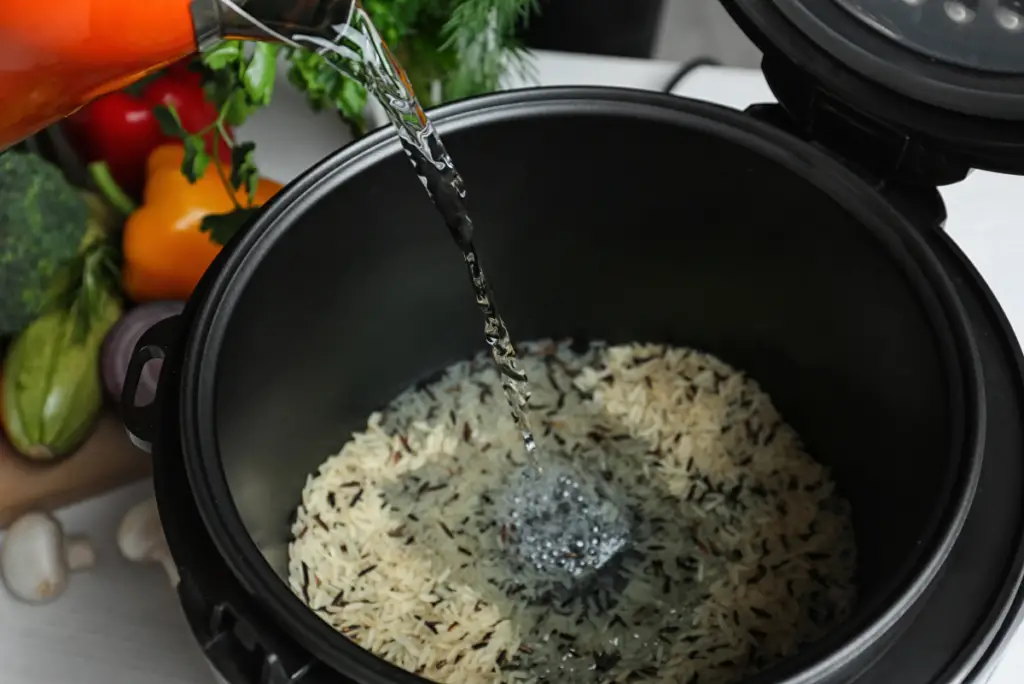I understand the frustration of dealing with a leaking pressure cooker. Not only can it be messy, but it can also affect the cooking process and lead to undercooked or ruined meals. Fortunately, there are several effective ways to address this issue and prevent leakage in your pressure cooker.
In this article, I will share some valuable tips and techniques that have helped me overcome this problem in my own kitchen.
What are the Causes of Pressure Cooker Leaks?

Before diving into the solutions, it’s important to understand the common causes of pressure cooker leaks. This knowledge will help you identify the specific issue and take appropriate action. Here are some potential reasons for pressure cooker leaks:
- Faulty or worn-out sealing ring: The sealing ring is a crucial component of a pressure cooker as it ensures a tight seal. Over time, the sealing ring can become worn out or damaged, resulting in leaks.
- Misalignment of the lid: If the pressure cooker lid is not properly aligned with the pot, it can lead to gaps that allow steam and pressure to escape.
- Clogged or faulty pressure release valve: The pressure release valve is responsible for regulating the internal pressure of the cooker. If it gets clogged or malfunctions, it can cause leaks.
- Damaged or defective safety valve: The safety valve is designed to release excess pressure when it reaches dangerous levels. If the safety valve is damaged or defective, it may not function properly, leading to leaks.
Now that we have a better understanding of the potential causes of pressure cooker leaks let’s explore some effective solutions.
4 Ways to Stop Pressure Cooker Leaks
1. Check and replace the sealing ring
The sealing ring is a critical component that ensures a proper seal in your pressure cooker. Over time, the sealing ring can become worn out, cracked, or stretched, leading to leaks.
Remove the sealing ring from the lid and carefully examine it for any signs of wear or damage. Look for cracks, tears, or stretches. If you notice any issues, it’s time to replace the sealing ring. Consult the user manual or contact the manufacturer to identify the correct replacement sealing ring for your pressure cooker model. Purchase a new sealing ring from a reputable source.
Once you have the new sealing ring, remove the old one from the lid and carefully install the new ring. Make sure it fits snugly and sits properly in the ring groove. Replacing the sealing ring can significantly reduce or eliminate leaks in your pressure cooker, ensuring a more efficient cooking process.
2. Ensure proper lid alignment
Proper alignment of the pressure cooker lid is crucial for maintaining a tight seal. If the lid is not aligned correctly, it can create gaps that allow steam and pressure to escape. Make sure the lid and the pot rim are clean and free from any debris or food particles. Any residue can interfere with the lid alignment and result in leaks.
Place the lid on the pot and ensure that it is aligned correctly. Rotate the lid slightly in both directions to check for proper alignment. It should fit snugly and evenly on the pot rim. Once the lid is aligned, lock it securely in place according to your pressure cooker’s instructions. This will ensure a tight seal and prevent any leaks during cooking.
3. Clean and maintain the pressure release valve
The pressure release valve is responsible for regulating the internal pressure of the cooker. If it gets clogged or malfunctions, it can cause leaks.
Consult your pressure cooker’s user manual for specific instructions on cleaning the pressure release valve. Different models may have varied cleaning methods. Carefully remove the pressure release valve from the lid and clean it thoroughly. Use a small brush or toothpick to remove any debris or buildup.
Check the valve for any signs of damage or wear. If you notice any cracks or defects, it may be necessary to replace the pressure release valve. Once the valve is clean and inspected, reassemble it according to the manufacturer’s instructions. Test the valve by manually releasing pressure to ensure it is functioning correctly.
Regular cleaning and maintenance of the pressure release valve will help keep your pressure cooker in optimal working condition, reducing the chances of leaks.
4. Address safety valve issues
The safety valve is an essential component that releases excess pressure in the cooker to prevent accidents. If the safety valve is damaged or defective, it may not function correctly, resulting in leaks.
Carefully examine the safety valve for any visible signs of damage or wear. If you notice any issues, it’s best to contact the manufacturer or a professional for assistance. Trying to repair or replace the safety valve yourself can be dangerous. If you suspect that the safety valve is not working correctly, it’s crucial to seek professional assistance. Contact the manufacturer or a certified technician to diagnose and address the issue.
Working with the safety valve requires expertise, and it’s always better to rely on professionals to ensure your safety and the proper functioning of your pressure cooker.
Conclusion
Dealing with a leaking pressure cooker can be frustrating, but with the right techniques, you can prevent and address this issue effectively. Checking and replacing the sealing ring, ensuring proper lid alignment, cleaning and maintaining the pressure release valve, and addressing safety valve issues are all important steps to stop a pressure cooker from leaking.
By taking these measures, you can enjoy leak-free cooking and delicious meals every time.
If you have any questions or additional tips on how to stop pressure cooker leaks, feel free to leave a comment below. I would love to hear from you and help you find solutions to your kitchen dilemmas.
